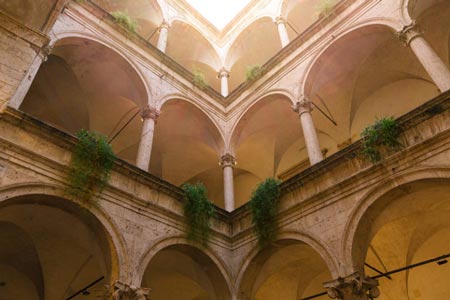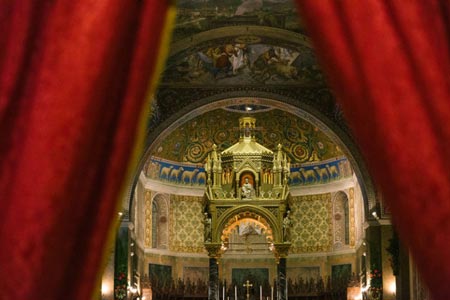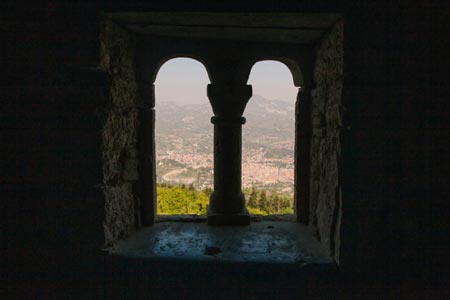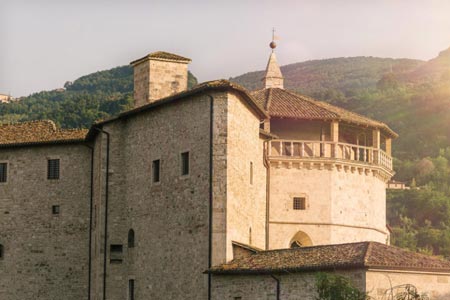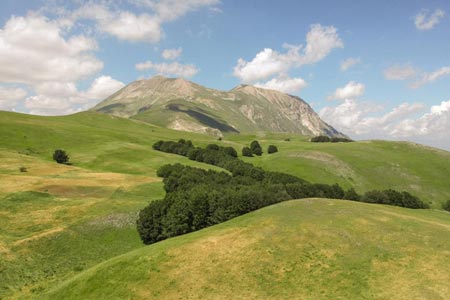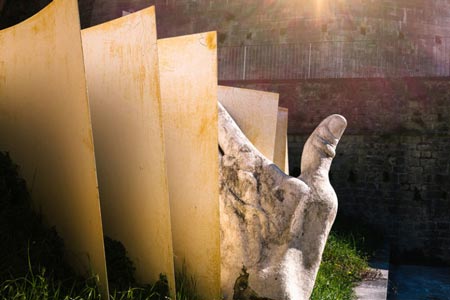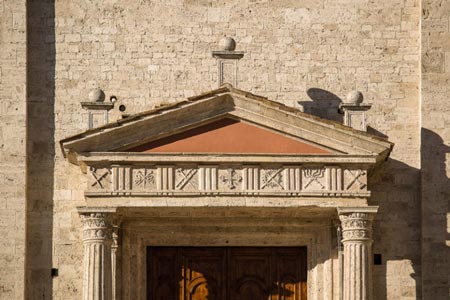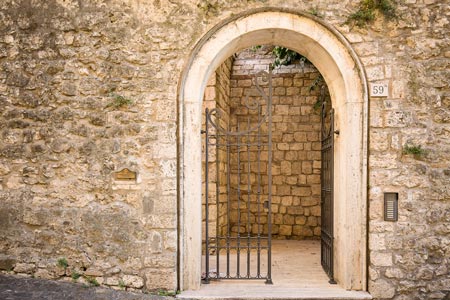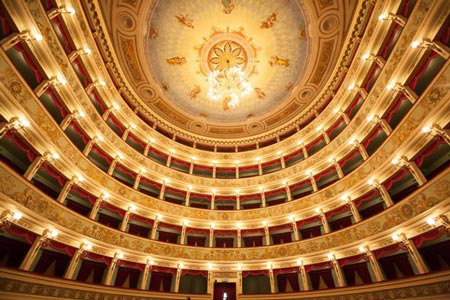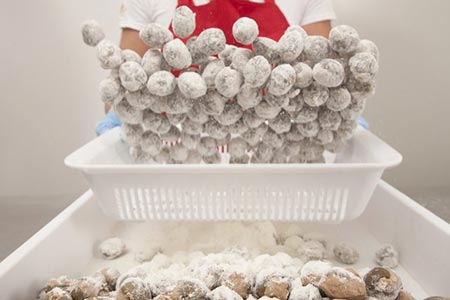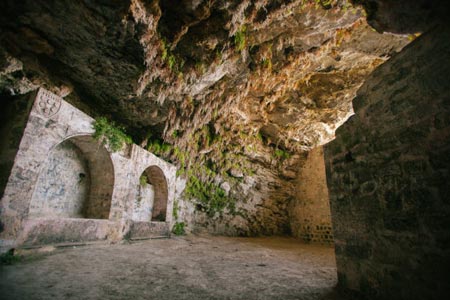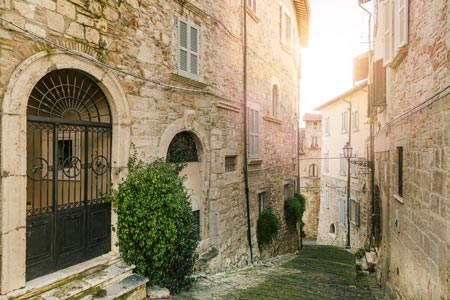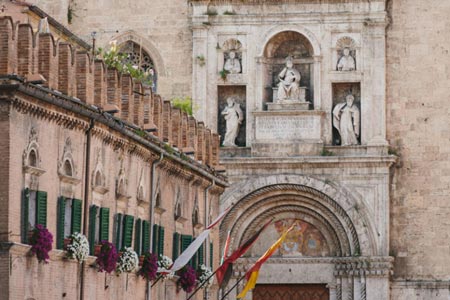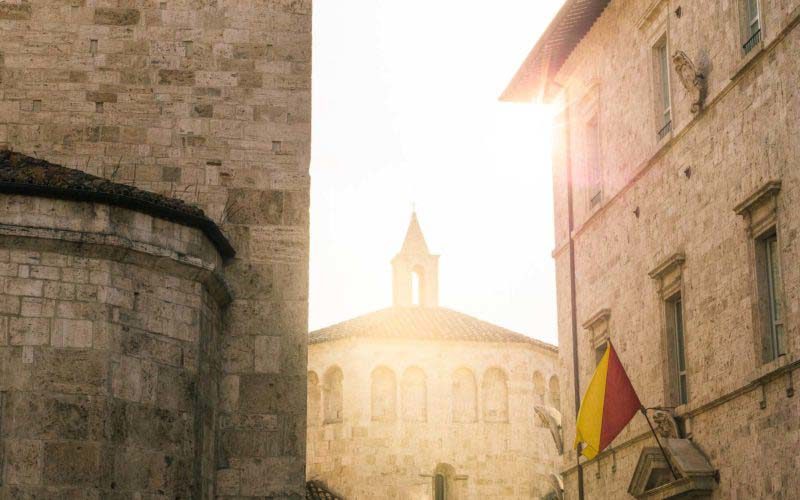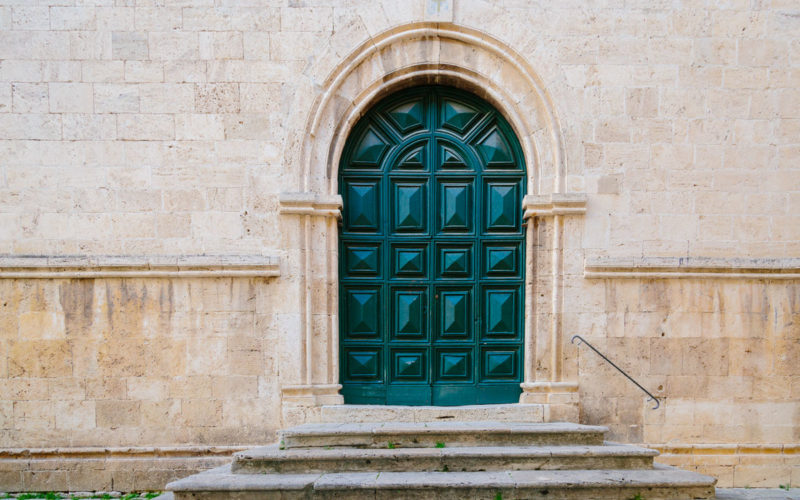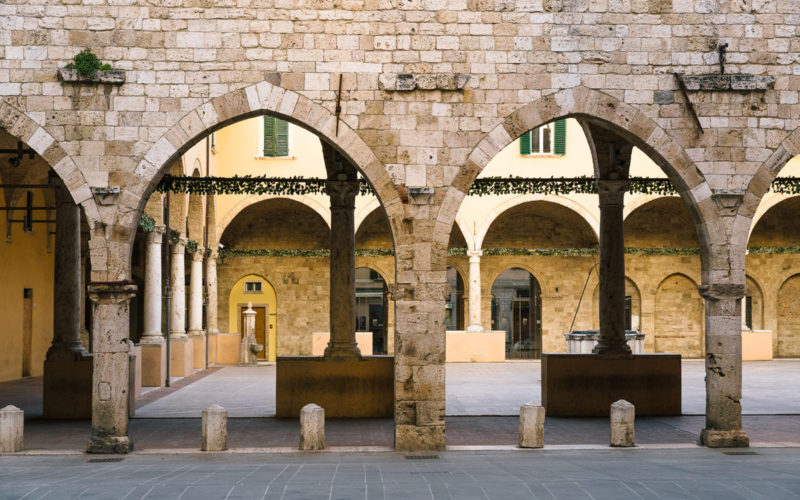Romanesque treasures in Ascoli: The Baptistery of S. Giovanni
The Baptistery of San Giovanni, in Piazza Arringo, rises to the left of the Duomo, separated from the complex of religious buildings; it has kept its Romanesque traits intact, unlike the highly remodeled Cathedral. The Baptistery is one of the best historical and artistic sites in Ascoli Piceno. It stands on the remains of a previous baptistery, perhaps from the 5th-6th century in a sacred Roman area: some traces of a pagan temple are still visible on the back east side of the baptistery.
The current structure is from the 12th century: the square base is made of old Roman blocks of travertine, and above it, there is an octagonal lantern decorated with full sixth blind Trifora with arches. The circular dome has a small lantern on the top. The different geometric shapes have a very strong symbolic meaning: the square plan is the earth and original sin, the octagon is baptism, while the dome, with its perfect circular geometry, is the sky and salvation. The presence of two doors is also undoubtedly symbolic. The baptistery west access was the largest one and the right path for the baptizers. On the contrary, the west view recalls the sunset and darkness. Once inside, the catechumen received baptism from the Bishop, becoming a full Christian, and then he came out from the south door, finally inside the Cathedral to attend the religious functions. According to Christian tradition, the non baptized couldn’t enter the Church for any reason!
Two circular baptismal basins were found embedded in the center of the floor, thanks to the restoration started for the Jubilee of 2000 and an archaeological investigation. The basin’s perimeter of the previous Baptistery (V-VI century) is much larger and is visible upon entering. This basin seems to incorporate the next smaller one, part of the current 12th-century building.
The different sizes are due to a slight variation of the rite: in the first centuries of Christianity, baptism was administered only to adults who received it lying down. Later, the baptized became younger and younger and arranged in a crouching or sitting position. At the end of the fourteenth century, the “immersion baptism” was abandoned in favor of the simpler “sprinkling baptism”, the basin closed and the parapet removed to place the new spring in the center of the floor (its remains are still visible today).
CONDIVIDI I TUOI SCATTI CON GLI HASHTAG: #visitascoli #ascolipiceno2024
AUTHOR: Lella Palumbi, expert in art history
